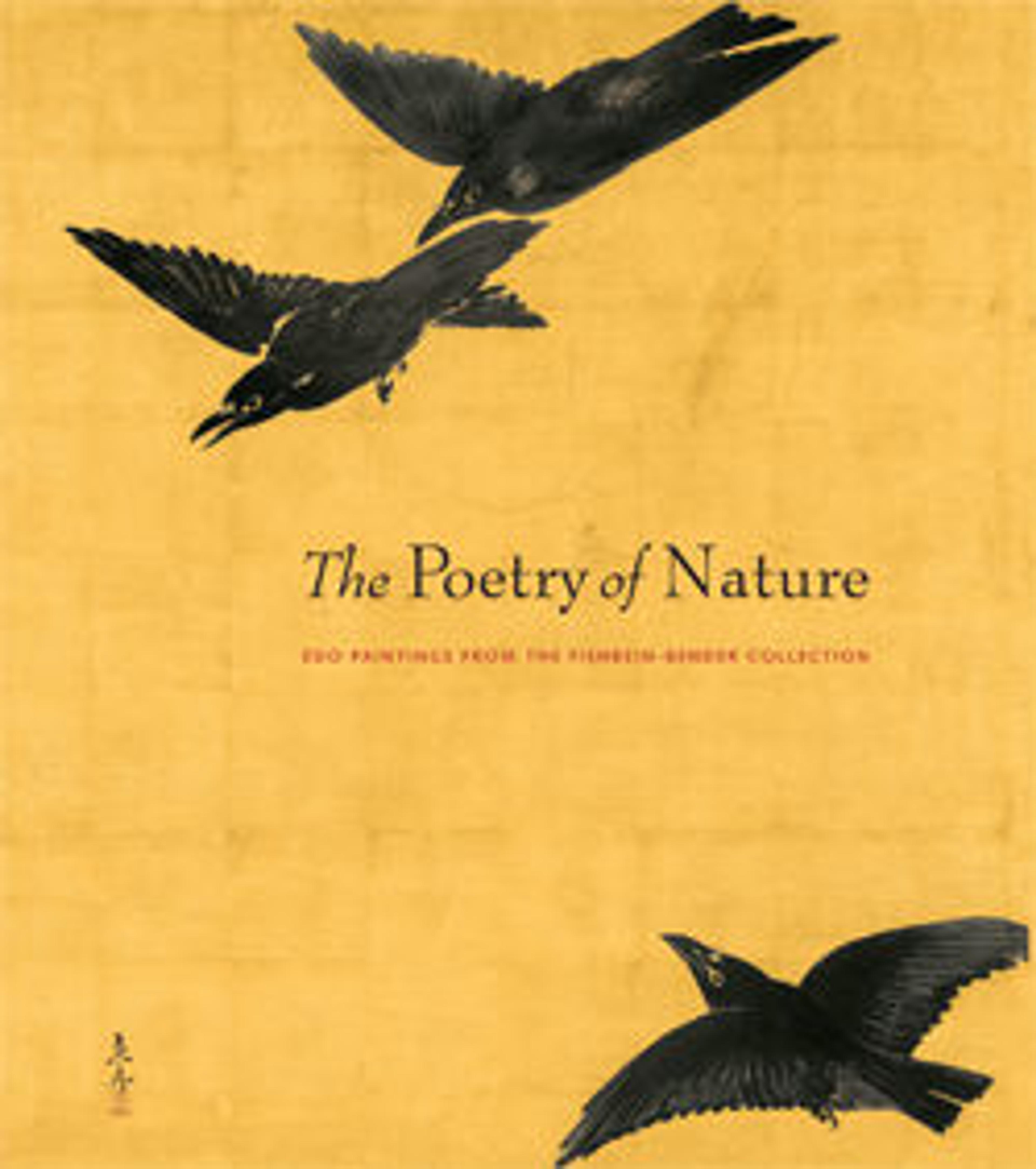Egrets, Peonies, and Willows
A pair of herons pause in shallow water beneath a drooping willow branch and tall stems of flowering plants, painted in the “boneless” manner, with limited ink outline and pale wash. Yamamoto Baiitsu mingled with Kyoto literati circles but also sought varied artistic influences in the work of Chinese painter Shen Nanpin (Shen Quan, 1682–1758), who worked in Japan from 1731 to 1733, and other Chinese artists known in Japan. He transformed what he learned into an idiosyncratic style characterized by a sensuous surface quality and serene clarity. Distinctive to his technique was an inclination to use ink in the same manner in which colors were customarily applied—not only for linear brushwork but also for soft washes. Skillfully combining ink wash with washes of color and well-defined, sinuous contours, he contributed a lyrical, intimate vision of nature to Literati (Nanga) painting.
Artwork Details
- 山本梅逸筆 柳鷺図
- Title:Egrets, Peonies, and Willows
- Artist:Yamamoto Baiitsu (Japanese, 1783–1856)
- Period:Edo period (1615–1868)
- Date:early 19th century
- Culture:Japan
- Medium:Hanging scroll; color on silk
- Dimensions:Image: 57 1/2 × 28 1/4 in. (146.1 × 71.8 cm)
Overall with mounting: 88 1/2 × 34 1/2 in. (224.8 × 87.6 cm)
Overall with knobs: 88 1/2 × 37 1/4 in. (224.8 × 94.6 cm) - Classification:Paintings
- Credit Line:The Harry G. C. Packard Collection of Asian Art, Gift of Harry G. C. Packard, and Purchase, Fletcher, Rogers, Harris Brisbane Dick, and Louis V. Bell Funds, Joseph Pulitzer Bequest, and The Annenberg Fund Inc. Gift, 1975
- Object Number:1975.268.109
- Curatorial Department: Asian Art
More Artwork
Research Resources
The Met provides unparalleled resources for research and welcomes an international community of students and scholars. The Met's Open Access API is where creators and researchers can connect to the The Met collection. Open Access data and public domain images are available for unrestricted commercial and noncommercial use without permission or fee.
To request images under copyright and other restrictions, please use this Image Request form.
Feedback
We continue to research and examine historical and cultural context for objects in The Met collection. If you have comments or questions about this object record, please contact us using the form below. The Museum looks forward to receiving your comments.
